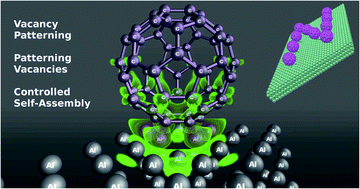Vacancy patterning and patterning vacancies: controlled self-assembly of fullerenes on metal surfaces
Abstract
A density functional theory study accounting for van der Waals interactions reveals the potential of metal surface vacancies as anchor points for the construction of user-defined 2D patterns of adsorbate molecules via a controlled self-assembly process. Vice versa, energetic criteria indicate the formation of regular adsorbate-induced vacancies after adsorbate self-assembly on clean surfaces. These processes are exemplified by adsorbing C60 fullerene on Al(111), Au(111), and Be(0001) surfaces with and without single, triple, and septuple atom pits. An analysis of vacancy-adatom formation energetics precedes the study of the adsorption processes.


 Please wait while we load your content...
Please wait while we load your content...